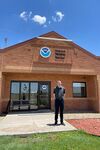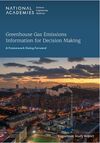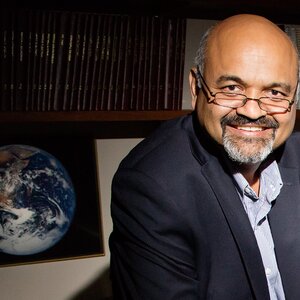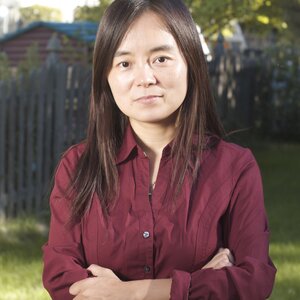2023-11-15
- Saturday evening theater enthusiasts and climate activists alike gathered in the Armory Free Theatre to watch Sophia Urban, senior in FAA, present their senior thesis production of “Hurricane Diane.” The show was accompanied by a discussion with Deanna Hence, assistant professor in LAS, and Donald Wuebbles, professor emeritus in LAS.
The discussion focused on the impact that artistic...
- 2023-10-05 - The Atmospheric Sciences Distinguished Alumni Lecture event will be held on Monday, October 16 at 4:00 p.m. in 2079 NHB. Our distinguished alumnus is Dr. Lourdes Avilés. Please join us virtually via zoom if you cannot join us in person: https://illinois.zoom.us/j/88302149084?pwd=...
- Protecting life and property with the National Weather Service LAS@Work with Devin Chehak Devin Chehak (submitted images) As summer storms roll though your region, have you wondered who is behind the science of a weather warning? In west Texas and portions of southeast New Mexico, College of LAS alumnus Devin Chehak (BS, ’18, atmospheric sciences...
- Atmospheric scientist Kelvin Droegemeier to join University of Illinois faculty Accomplished alumnus who previously led White House Office of Science and Technology Policy also will advise the chancellor and support U of I System Kelvin Droegemeier, a research meteorologist who previously held several national science and policy leadership roles, is joining the faculty of the Department of...
- NATIONAL ACADEMY OF SCIENCES, WASHINGTON — A global clearinghouse for greenhouse gas emissions information should be created to support decision-makers working to address climate change, says a new report from the National Academies of Sciences, Engineering, and Medicine. Such a clearinghouse could facilitate new ways of estimating emissions and transition research findings to operations more...
- The Gibson City flood occurred on August 12, 2021, in Gibson City, Illinois. During this event, around 10 inches of rain fell in less than 10 hours. There were numerous water rescues conducted during the event and after it ended. During the flooding event, all the roads were impassable in Gibson City at one point. The evolution of this flooding event can be visualized through a “story map” (...
- The study was conducted by Professor Sonia Lasher-Trapp, current graduate student Enoch Jo, and recent alumni Luke Allen and Bryan Engelsen. It identifies and quantifies various mechanisms of entrainment, and their diluting effects, in the developing and mature stages of a simulated supercell thunderstorm. The two stages, differentiated by the lack or presence of a rotating...
- The COVID-19 pandemic has been a disaster for the world, but efforts to control the disease have produced at least one silver lining in terms of the environment: a decrease in global emissions. Efforts to mitigate the spread of COVID-19, such as lockdowns, social distancing, and closures, resulted in a drop in the emissions of several harmful gases, most notably carbon dioxide, throughout much...
- Although tornadoes produced by quasi-linear convective systems (QLCSs) generally are weak and short-lived, they have high societal impact due to their proclivity to develop over short time scales, within the cool season, and during nighttime hours. Precisely why they are weak and short lived is not well understood, thus motivating the recently published study by Geoff Marion and Jeff Trapp...
- LAS Communications The state of Illinois is undergoing a rapid change in weather patterns that already has started to transform the state, according to a major new scientific assessment by researchers at several universities, government agencies, and organizations, including The Nature Conservancy and the University of Illinois. The...
- Some of the most intense convective storms on Earth initiate near the Sierras de Córdoba mountain range in Argentina. The overarching goal of the RELAMPAGO field campaign, which was conducted near this mountain range during November-December 2018, was to observe these intense convective storms and their associated impacts. The field campaign had several components, including one focused on...
- As described by Prof. Don Wuebbles and colleagues in the January 2021 issue of EOS: Cities and urban areas already experience many different stresses, but now face additional stresses from ongoing and projected climate change. Many cities, including Barcelona, Chicago, New York, Paris, and Seattle, are attempting to increase sustainability through climate action plans that map out...
- The Global Carbon Project recently published the Global Carbon Budget 2020, giving world leaders access to data on atmospheric carbon concentrations, emissions and trends. Illinois atmospheric scientist Atul Jain was part of an international team of...
- Prof. Zhuo Wang is one of four professors in the College of LAS who have been named Richard and Margaret Romano Professorial Scholars for their leadership and research. Read more here.
- In June of 2016, nine United States Army soldiers were on a routine training exercise at Fort Hood, Texas. They made the decision to traverse a low water crossing on Owl Creek. Unbeknownst to them, that crossing was closed and under 7 feet of water. Tragically, their military vehicle was swept downstream and those nine soldiers perished. The Army’s Investigating Officer stated that procedural...











